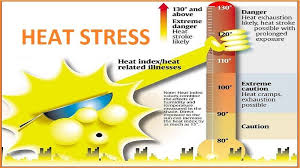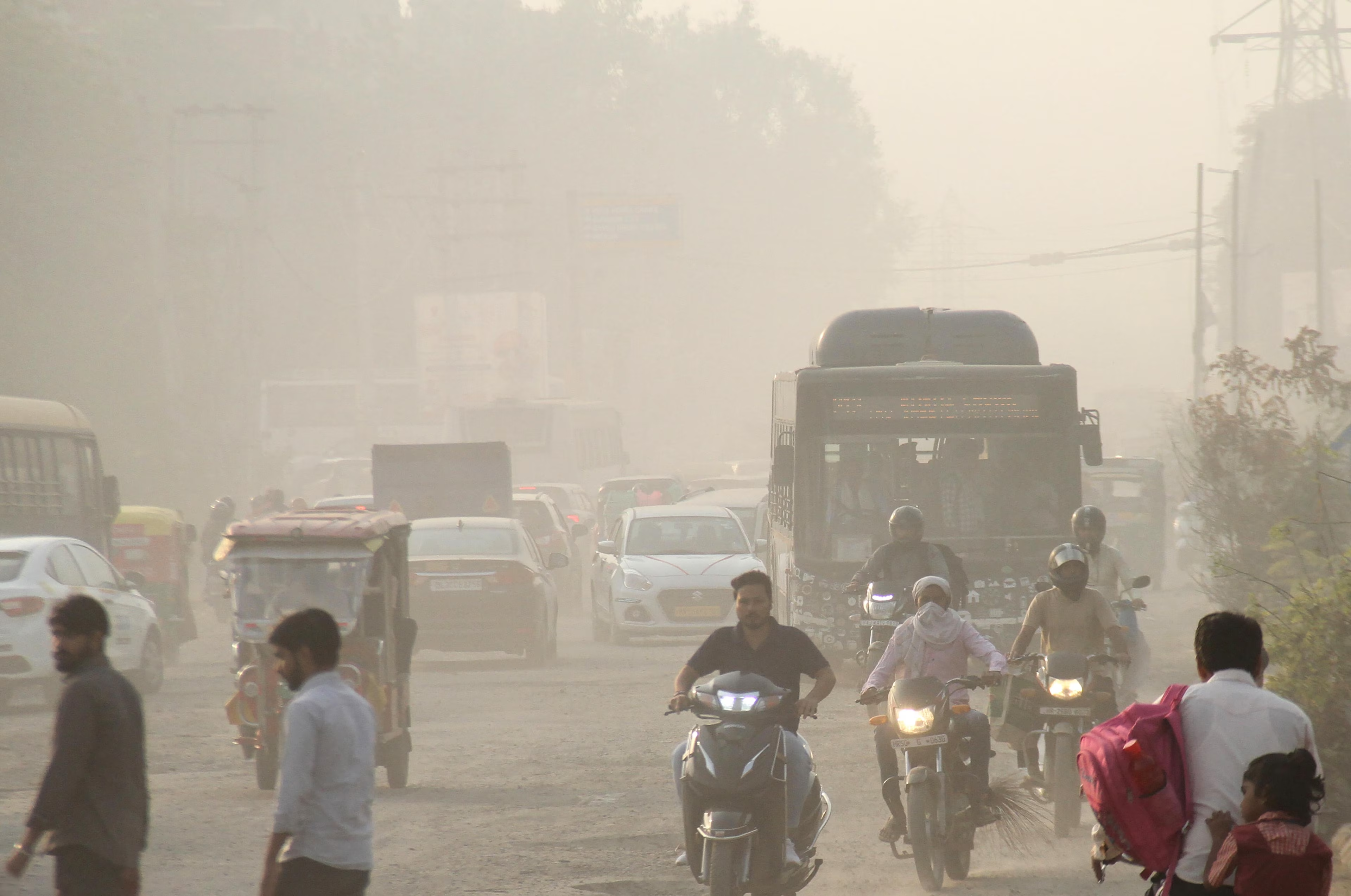The Hindu : Page 08
Syllabus GS: 1 & 3 : Geography & Enviroment

Introduction
- In recent periods, climate change and environmental degradation have significantly affected the safety and the health of workers worldwide.
- Heat stress is anticipated to affect labour efficiency and productivity, in turn reducing work hours and hindering the International Labour Organization’s (ILO) objective of promoting fair and decent employment.
The Effects of heat stress
- Health effects : The main health effects of heat stress on workers include heat stroke, heat cramps, cardiovascular disease, acute kidney injury, and physical injury.
- IPCC states : The Intergovernmental Panel on Climate Change (IPCC) states that to retain normal physiological activities, it is necessary to maintain a core body temperature of roughly 37°C.
- Temperature elevations: Temperature elevations over 38°C have a deleterious effect on one’s cognitive and physical capabilities.
- Health effects on women: During various life stages, women who are employed in heat-exposed sectors, such as subsistence agriculture, may be at risk for pregnancy-related complications, including hypertension, miscarriages, and premature births.
- Diminish work productivity: An increase in temperature can diminish work productivity due to excessive heat that makes it difficult to work. Or, there is a need for personnel to operate at a slower pace.
ILO study findings
- Global GDP: The ILO study (2019) estimated that Heat stress is projected to reduce total working hours worldwide by 2.2 percent and global GDP by US$2,400 billion in 2030.
- Agricultural and construction workers: Agricultural and construction workers are expected to be the worst affected, accounting for 60 percent and 19 percent, respectively of working hours lost to heat stress in 2030.
o Agricultural workers face a significantly higher risk from heat than workers in other occupations, with farmworkers being 35 times more susceptible to heat-related fatalities.
- Affecting labour productivity: The Asia and the Pacific regions experience the highest Gross Domestic Product (GDP) losses due to heat stress affecting labour productivity.
- Region’s GDP: In 1995, the region’s GDP was estimated to have decreased by 1.4%, which is forecast to decrease by 2.3% in 2030 due to climate change.
- Projections: Projections indicate that Thailand, Cambodia, and India will experience significant declines in their national GDP in 2030, with a decrease of over 5%.
- Exceptional diversity: Asia and the Pacific exhibit exceptional diversity in terms of climate and the varying levels of economic development among various countries.
- Geographical distribution: The geographical distribution of heat stress impact is not uniform.
- Working hours and output: The decline in available working hours and output among small-scale and subsistence farmers is expected to affect household food security.
- Gender disparities: Heat stress poses concerns that have the potential to exacerbate gender disparities in the workforce, particularly by deteriorating working conditions for the numerous women engaged in subsistence agriculture.
- Sustainable Development Goals: Excessive heat stress is expected to impact the achievement of various Sustainable Development Goals (SDGs).
Impact in India
- India is undergoing a consistent increase in temperatures annually. By 2030, an estimated 160 million-200 million individuals around the nation may face the risk of experiencing deadly heat waves every year.
- A study in West Bengal shows that as the temperature increases by 1°C, there is a corresponding decrease of approximately 2% in the productivity of female brickmaking workers.
- In addition, India is expected to experience a significant decline in full-time employment by 2030 as a result of heat stress, which can be attributed to its large population.
- Informal workers may continue working despite the risk to their health from extreme climate events due to financial constraints.
- Thus, there is a need to strengthen adaptation and mitigation measures at the global, national, and workplace levels to reduce the detrimental impact of heat stress on workers.
Government initiatives
- Prevention and Management of Heat Wave: There are national guidelines under the title, ‘Preparation of Action Plan – Prevention and Management of Heat Wave’, by the National Disaster Management Authority in collaboration with the Ministry of Home Affairs.
- These guidelines are designed to protect the Indian workforce from the negative impacts of extreme heat.
- They are designed to help public officials create heatwave action plans for both urban and rural areas, with a focus on the general population.
- The importance of the following factors is highlighted: providing education to workers; ensuring proper hydration; managing work schedules, and offering necessary medical facilities.
- It is crucial for all stakeholders, including governments, employers, and workers, to collaborate in implementing measures that prioritise the protection of the most vulnerable individuals.
- Additionally, there should be a focus on improving the implementation of international labour standards that are related to occupational safety and health.
- Further, effective communication between workers and employers is essential to facilitate the adjustment of working hours, guarantee adequate rest breaks, provide access to drinking water, and offer training on the identification and management of heat stress.
- Additionally, infrastructure-related measures, such as implementing construction standards, should safeguard indoor workers.
Way forward
- Considering the current climate change scenario, decent and green employment emerges as a promising solution for the future of work.
- Green jobs are employment opportunities that help protect or restore the environment while also supporting economic and social well-being.
What is Heat Stress?
o Heat stress occurs when the body cannot get rid of excess heat. When this happens, the body's core temperature rises and the heart rate increases.
o Basically, it refers to the physiological stress experienced by the body when exposed to excessive heat, particularly in high-temperature environments.
o High ambient temperatures
o High humidity levels, which reduce the body's ability to cool through sweating
o Physical exertion, especially in hot conditions
o Inadequate hydration
o Poor ventilation in workspaces or living environments
o As the body continues to store heat, the person begins to lose concentration and has difficulty focusing on a task, may become irritable or sick, and often loses the desire to drink.
o The next stage is most often fainting and even death if the person is not cooled down.
What is Urban heat island (UHI) effect?
- About
- UHI effect refers to the phenomenon where urban areas experience significantly higher temperatures than their rural surroundings.
- This temperature difference is primarily due to human activities and the specific characteristics of urban environments.
Causes
o Urban areas have more asphalt, concrete, and buildings that absorb and retain heat, unlike rural areas with vegetation that provide cooling through evapotranspiration.
- Heat Generated by Human Activities
o Industrial processes, vehicles, air conditioning units, and other machinery generate heat.
o Less green space and fewer trees mean less shading and cooling from plants.
o Tall buildings and narrow streets can trap heat and reduce airflow, limiting cooling.
o Energy consumption for lighting, heating, and cooling buildings releases additional heat.
Mitigation Strategies
- Increased Vegetation: Planting trees and creating green spaces can help cool urban areas through shading and evapotranspiration.
- Cool Roofs and Pavements: Using materials that reflect more sunlight and absorb less heat can reduce temperatures.
- Green Roofs: Installing vegetation on rooftops can provide insulation and reduce heat absorption.
- Urban Planning: Designing cities to include more parks, green belts, and open spaces can improve airflow and reduce temperatures.
- Energy Efficiency: Improving the energy efficiency of buildings can reduce the heat generated by human activities.




